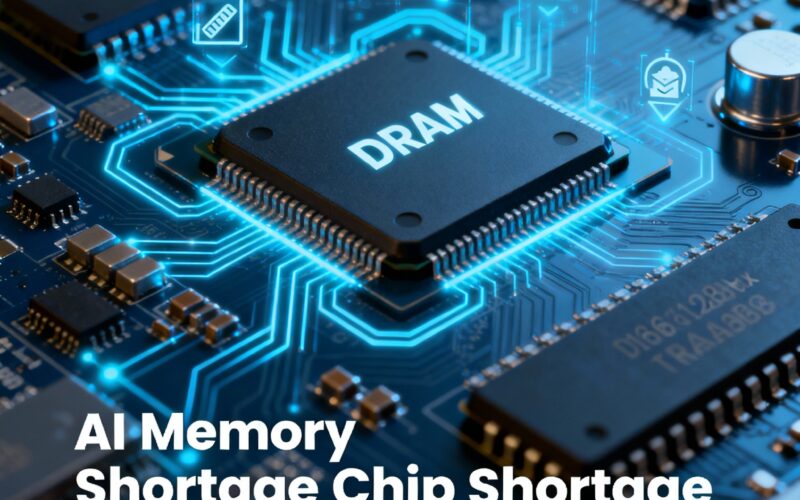The AI memory chip shortage has emerged as a critical challenge for the semiconductor industry in recent months. Supply of mundane semiconductors has become so tight that the global memory chip industry is poised to head into what analysts call a “super cycle,” with device makers frantically stocking up on memory chips.
Industry executives report dramatic changes in market dynamics. Tobey Gonnerman, president of semiconductor distributor Fusion Worldwide, noted that within the last month or two, there has been a huge demand surge. Events have unfolded in a fast and furious way, with definite scrambling and double or triple ordering occurring, similar to patterns seen in previous shortages.
The root cause of the AI memory chip shortage lies in production capacity reallocation. Memory chip makers started allocating more production capacity to high-bandwidth memory (HBM) chips used to build Nvidia’s powerful AI chipsets after ChatGPT kicked off the generative AI craze in November 2022.
This shift triggered a global rush to build AI data centers, fundamentally altering semiconductor supply chains. Major tech companies including Alphabet, Amazon, Meta, Microsoft and CoreWeave are expected to spend $400 billion on AI infrastructure this year, according to Morgan Stanley.
The AI memory chip shortage has coincided with a replacement cycle for traditional data centers and personal computers, along with better-than-expected phone sales. Traditional data center operators are starting to upgrade or replace servers they bought during the previous boom of 2017-2018.
This convergence of factors is exacerbating tight supply of non-HBM memory chips and driving up their prices significantly. Gonnerman explained that traditional data centers were swimming in DDR5 server memory six or eight months ago, but now average selling prices on DDR5 server modules are going through the roof.
Market data reveals the dramatic price increases driven by the AI memory chip shortage. Spot prices of DRAM, used in various applications, nearly tripled in September from a year earlier after growing a meager 4% in April, according to TechInsights data.
The average inventory of DRAM chips fell to just eight weeks in the current quarter, down from 10 weeks a year earlier and 31 weeks in early 2023. This inventory squeeze intensifies pressure on manufacturers and device makers trying to secure adequate chip supplies.
Industry analysts project significant profitability shifts resulting from the AI memory chip shortage. Jeff Kim, head of research at KB Securities, expects non-HBM memory chips will surpass HBMs in profitability next year if current price increases continue.
In the July to September period, Samsung generated an operating margin of about 40% for commodity DRAMs and 60% for HBMs, Kim estimated. The narrowing gap suggests commodity memory chips may become increasingly lucrative for manufacturers.
Memory chip manufacturers are experiencing a resurgence in their stock prices and market valuations. The unexpected ripple effect of the AI boom is giving companies like Samsung Electronics, which has lagged rivals in offering advanced AI chips, a rally in their share prices.
TechInsights forecasts significant memory market growth driven by AI applications. AI-driven applications are fueling 70% year-over-year growth in high-bandwidth memory, reshaping the DRAM market while AI boosts demand for high-capacity SSDs, driving over 30% datacenter NAND growth by 2025.
However, analysts caution about potential future challenges from the AI memory chip shortage. AI-driven demand is shifting capital expenditure towards DRAM, especially HBM, while NAND investment slows, potentially leading to future supply challenges in different memory segments.
The semiconductor industry faces a delicate balancing act. While the AI memory chip shortage creates immediate profitability opportunities for memory manufacturers, analysts warn about a possible chip industry downturn in 2027 if supply and demand dynamics shift again.
Edge AI development adds another dimension to memory demand projections. Edge AI will begin emerging in 2025, with its market impact and memory demand growth expected to take hold by 2026, further complicating supply planning for chip manufacturers.
Stay informed about the latest semiconductor developments and AI industry trends transforming technology markets, visit ainewstoday.org for real-time updates on chip shortages, pricing trends, and breakthrough innovations shaping tomorrow’s digital infrastructure!









